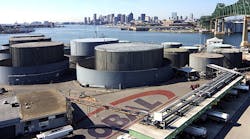Construction spending increased 0.1% from July to August and 5.3% for eight months of 2018 combined, with continued year-to-date gains for major public and private categories, according to an analysis of new government data by the Associated General Contractors of America.
Association officials said that these spending figures showed strong demand in construction across the country but that growth in the construction industry still depends on contractors' ability to find sufficient qualified workers, urging public officials to step up support for career and technical education and to allow employment-based immigration.
"Nearly all categories of construction spending continued to expand through August," said Ken Simonson, the association's chief economist. "Furthermore, growth is well-balanced among public, private nonresidential and residential projects. But contractors are increasingly worried about a shortage of skilled workers."
Spending year-to-date through the first eight months of 2018 was 7.0% higher than in January through August 2017 for public construction and 4.8% for private construction, the economist remarked. Within private construction, spending for residential projects increased 6.5% and 2.7% for nonresidential projects.
Most major segments had gains, Simonson observed. The largest public categories recorded year-to-date gains of 6.4 percent for highway construction, 1.0 percent for educational construction and 15.9 percent for transportation construction. Of the three private residential spending categories, single-family homebuilding rose 7.9 percent year-to-date, multifamily slipped by 0.7 percent and improvements to existing buildings climbed 6.9 percent. Among private nonresidential spending niches, the largest—power construction (including oil and gas field and pipeline structures)—edged up 1.1 percent, commercial (retail, warehouse and farm) construction rose 4.6 percent, office construction increased 6.5 percent and manufacturing construction declined 5.5 percent.
"In a survey of more than 2500 firms that our association released recently, respondents overwhelmingly say they plan to add employees in the next 12 months—a strong indicator of ongoing demand for construction," Simonson added. "However, 80 percent of the firms report difficulty filling hourly craft positions. These labor shortages are prompting many firms to increase costs and delay construction schedules."
Association officials said the growth in construction spending was a sign that recently enacted tax and regulatory reforms are helping stimulate new economic growth. But they cautioned that labor shortages could undermine future demand for construction by inflating the cost of many projects. They urged federal officials to increase funding for career and technical education programs, make it easier to establish apprenticeship and other construction training programs, and allow more people with construction skills to legally enter the country.
"The best way to ensure construction firms can keep pace with growing demand is to find new ways to recruit and prepare a new generation of worker," Sandherr said. "Exposing more young adults to the opportunities available to them in construction is the best way to get more people into high-paying careers in the sector."









